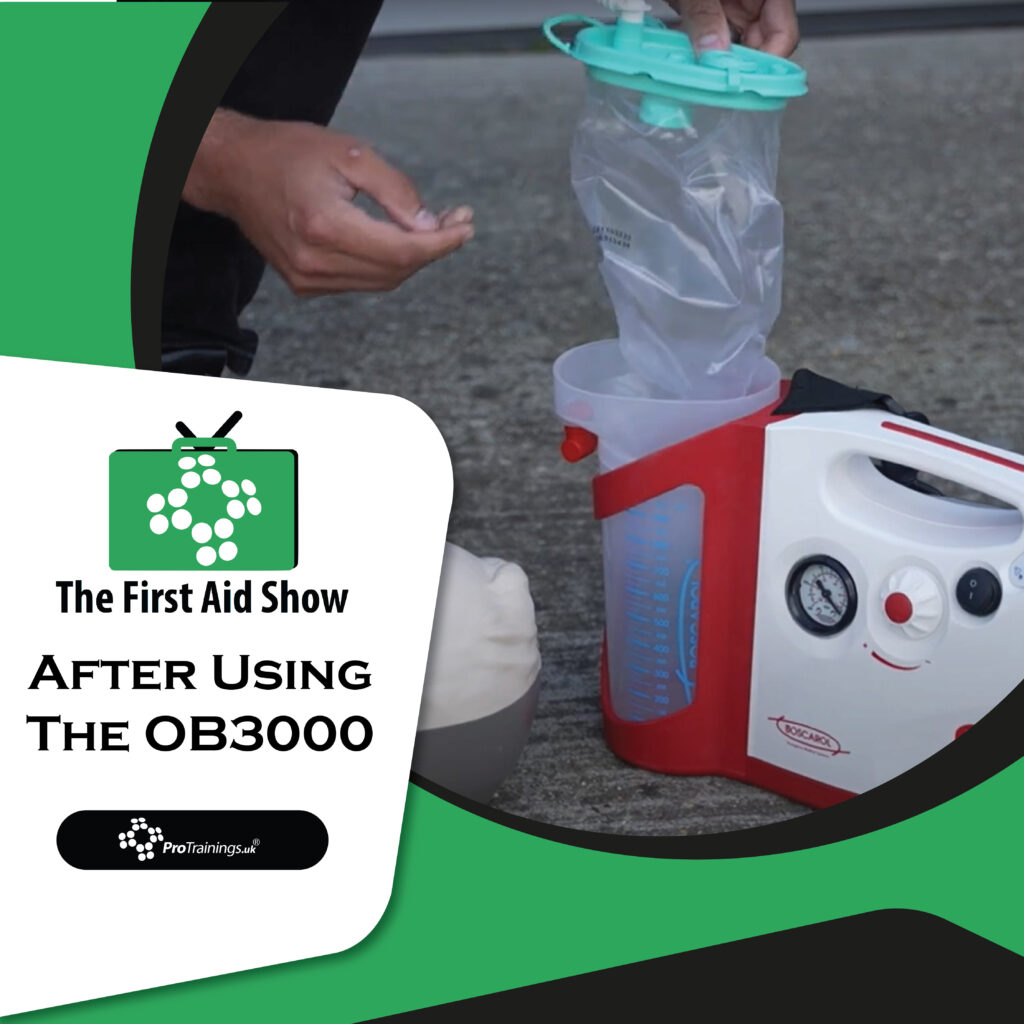After Using The OB3000
Careful cleaning and maintenance are essential after using the OB 3000 medical suction unit. Here’s a detailed guide on what to do to ensure the unit is prepared for future use and upholds the highest hygiene standards.
Initial Steps
Begin by turning off the OB 3000 and unplugging it from the power source. Carefully dismantle the canister, tubing, and any other detachable components. Dispose of single-use parts like the suction catheter and canister liner in accordance with your healthcare facility’s waste disposal protocols.
Disposal of Components
Place all used disposable components, including the catheter and canister liner, into a biohazard waste container. It’s crucial to adhere strictly to biohazard disposal guidelines to avoid any risk of contamination.
Cleaning Process
After disposal, commence cleaning the reusable components. Start by rinsing the tubing and canister under warm, soapy water to remove residual debris. Use a brush to scrub any tough spots. Ensure all parts are thoroughly rinsed with clean water to eliminate soap traces.
Disinfection
Following cleaning, disinfect these components using a high-quality medical disinfectant. Submerge or thoroughly wipe each part, ensuring complete coverage. Follow the disinfectant’s specified contact time to guarantee effective sanitization.
Drying and Inspection
Allow the components to air dry in a sterile area, free from potential contaminants. Refrain from using cloths or towels which might reintroduce bacteria.
Once dry, inspect each part for signs of wear or damage. Replace any components that show cracks, tears, or significant wear.
Reassembly and Testing
Reassemble the OB 3000 carefully, making sure all connections are secure and functional. Conduct a functional test by turning on the unit, adjusting suction levels, and listening for any abnormal sounds. Verify that the suction performance meets operational standards.
Storage
After Using The OB3000: Store the unit in a clean, dry location away from contaminants and ensure it’s readily accessible for next use. Keep all parts together to avoid misplacement or damage.
Conclusion
By following these meticulous cleaning, maintenance, and storage steps, you can ensure the OB 3000 is always in optimal condition, ready to perform effectively and safely for every new patient encounter.


